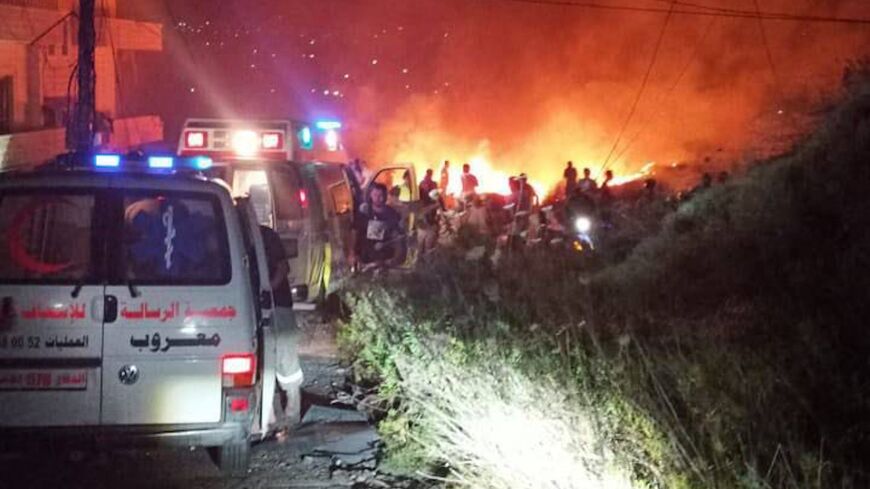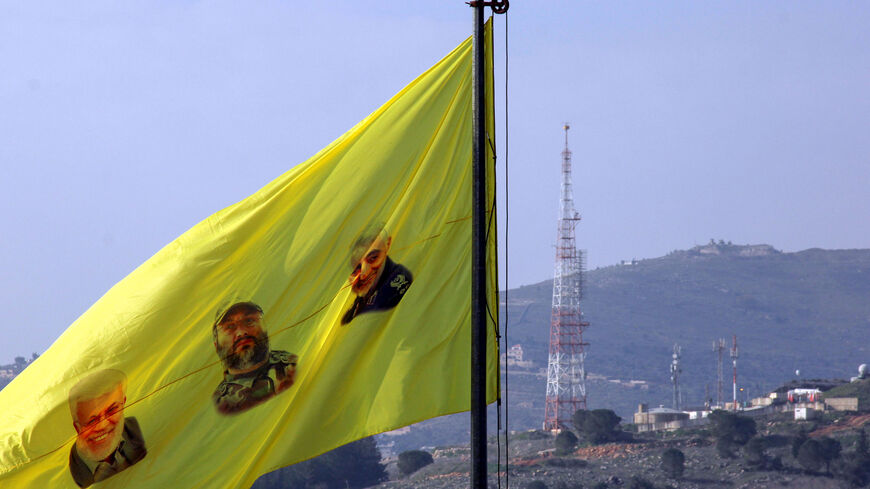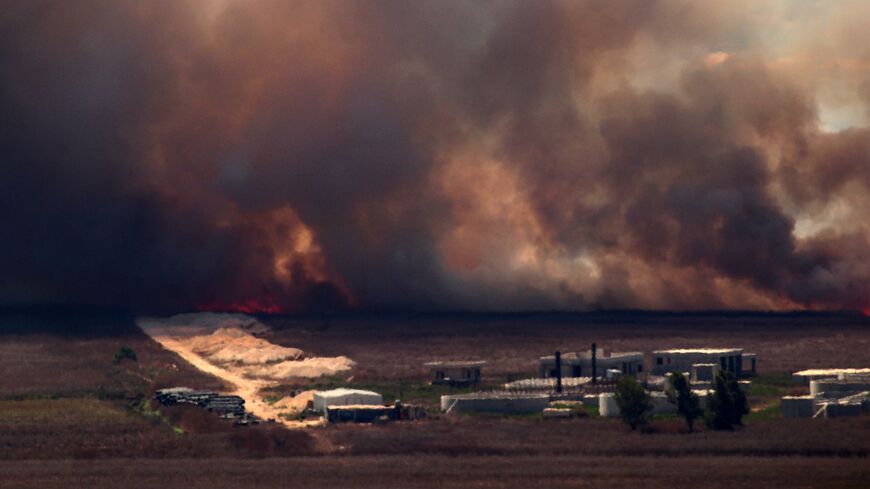In warning to Israel, Hezbollah shows off massive underground tunnel network
The massive show of force comes as Hezbollah promised a harsh response to the killing of one of its senior commanders in an Israeli strike in Beirut last month.

BEIRUT — Lebanon’s Hezbollah movement released a video Friday showing a massive underground facility used by the group to store and launch missiles amid heightened fears of an all-out war between the Iran-backed group and Israel.
The well-produced, four-and-a-half minute video, published on Hezbollah’s Military Media website, is titled “Our mountains are our storehouses.” It showcases a well-lit maze of large, complex tunnels where Hezbollah operatives in full military gear are seen moving around.
The facility, which appears to be built inside a mountain, is identified as “Imad 4,” in an apparent reference to the group's late top commander Imad Mughniyeh, who was killed in a 2008 Damascus car bombing blamed on Israel.
Motorbikes and a convoy of large trucks that appear to be carrying missiles are seen driving around the tunnels. Large missile launchers are also seen emerging above ground ready for use.
The voice of Hezbollah chief Hassan Nasrallah is heard throughout the video. In his recorded message — an excerpt of one of his previous speeches — Nasrallah boasts about Hezbollah’s possession of “precision and non-precision missiles along with weapons capabilities so that if Israel imposes a war on Lebanon, Israel will face a destiny and reality it didn't expect any day.”
“Targets are in our possession and the coordinates are in our hands, and these missiles are placed, deployed and focused on targets and in perfect secrecy,” Nasrallah says in the excerpts subtitled in both English and Hebrew.
An underground facility revealed by Hezbollah in this video with an indication it’s one of many, loaded with missiles and extends to what seems to be a large area. The facility is called Emad 4. pic.twitter.com/quCvdmAmPT
— Ali Hashem علي هاشم (@Alihashem) August 16, 2024
Hezbollah-affiliated Al-Manar TV described the video as “a clear message of full readiness to the Israeli enemy.”
Hezbollah, founded in the 1980s under the banner of fighting the Israeli occupation, remained the only Lebanese faction to keep its weapons after the end of the country’s civil war in 1990 and after the Israeli withdrawal in 2000. The group has continued to develop its stockpiles and expanded its military engagement into the Syria and Yemen conflicts.
The rare public display of one of its facilities comes as Hezbollah vowed to respond to the killing of its senior commander, Fuad Shukr, by Israel late last month. Shukr was killed in an Israeli strike in the southern suburbs of the Lebanese capital Beirut July 30.
Nasrallah has repeatedly threatened to attack Israel in retaliation. In his latest speech last week, he vowed a “strong, impactful and effective response” to Shukr’s killing, “whatever the consequences.”
Hezbollah, which is heavily backed by Iran, launched rockets toward Israel Oct. 8, the day after the Israel-Hamas war broke out in the Gaza Strip. Since then, the two have been engaged in the most violent round of fighting since they last fought a war in July 2006.
The escalating cross-border fire has raised fear of all-out war in Lebanon, prompting a flurry of diplomatic activity to contain the escalation in the country as well as in the region amid Iran’s threats to launch a retaliatory strike over the assassination of Hamas leader Ismail Haniyeh in Tehran in a suspected Israeli strike last month.
On Friday, talks on a Gaza cease-fire resumed in Doha for a second day, including Israeli officials and US, Qatari and Egyptian mediators. Hamas boycotted the meeting. World diplomats hope the talks will delay an Iranian response.







